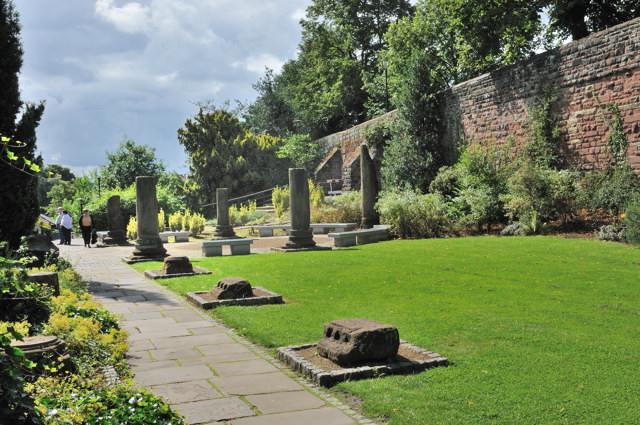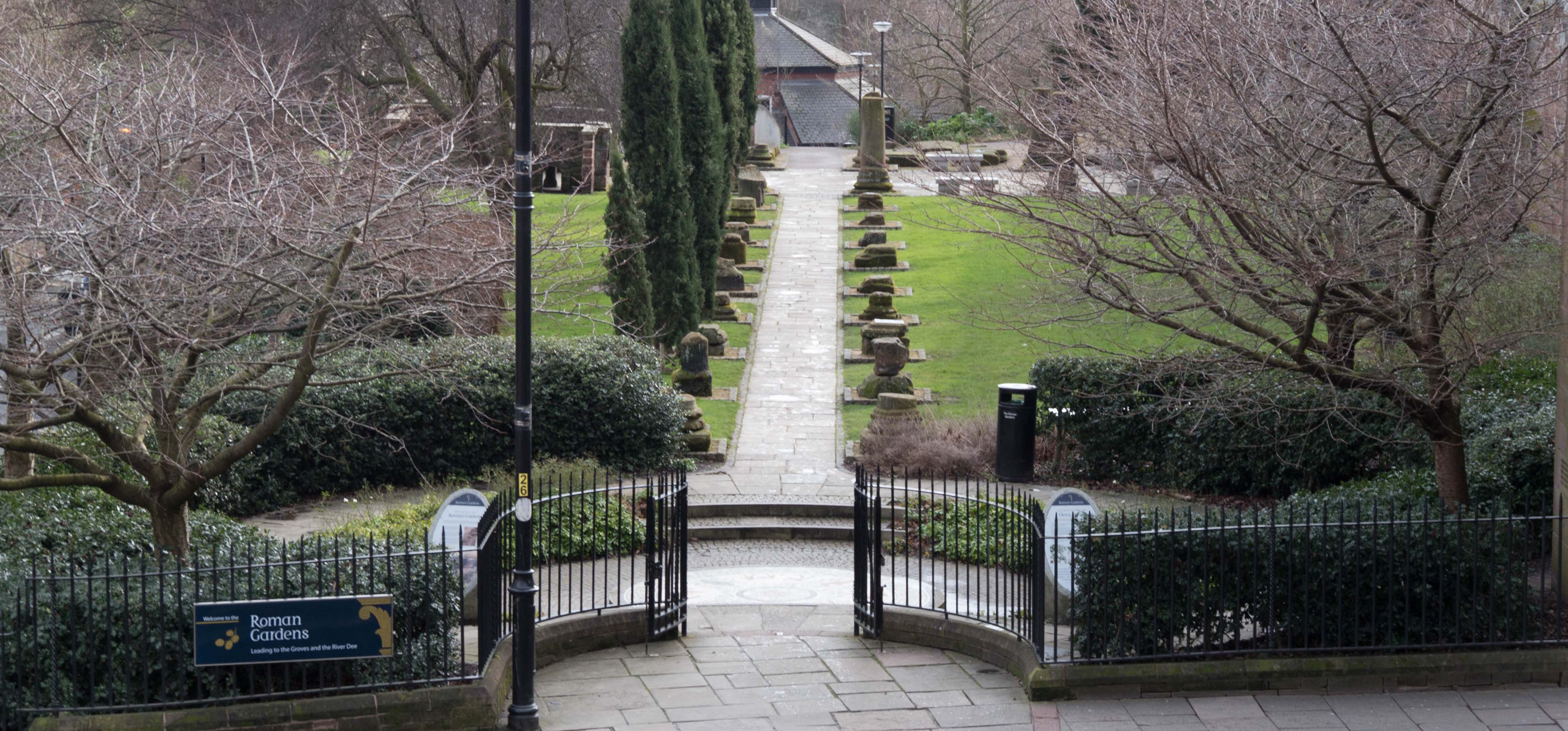
In 1949 the Roman gardens were created to house Roman building fragments which had been found around the city. Many of the fragments originate from the fortress baths like the columns and hypocaust, while others like grave stones were found embedded in the northern stretch of the walls. A reconstructed hypocaust also sits here, demonstrating the ingenious Roman heating solutions.
In 2000 the gardens were remodeled, providing visitors easy access to the River Dee. The new design makes use of the steep gradients, providing a winding path which guides visitors around the key features. The trees and bushes present are carefully chosen to provide links to Roman times, especially plants with early medicinal purposes. Disabled visitors are also catered for with a gently sloping path.
